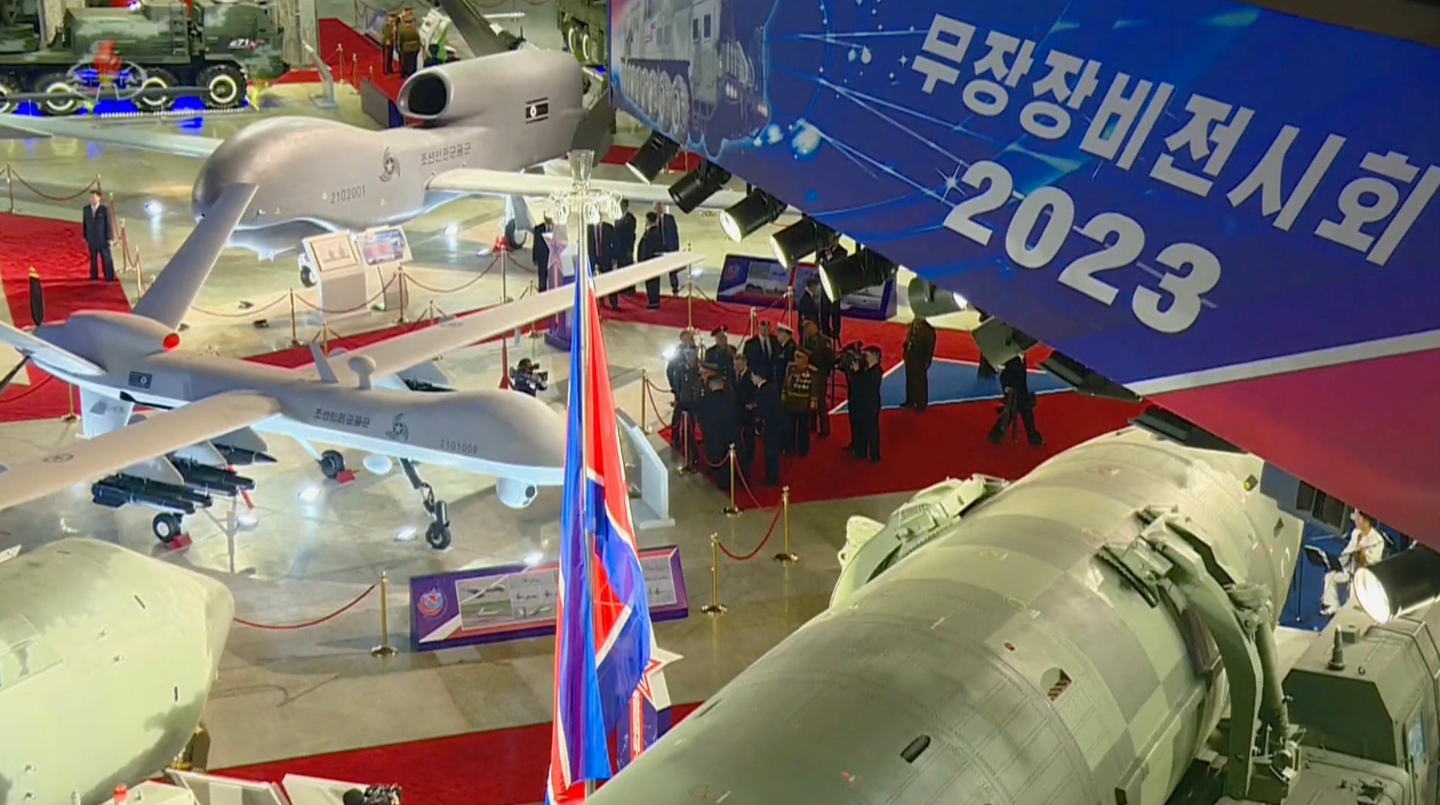North Korea has reportedly begun a military modernization program involving converting hundreds of outdated fighter jets into kamikaze drones, aiming to use them to target major industrial and infrastructure locations in South Korea.
In a report dated June 24, the Korea Times cited Choe Su-ryong, a former operative of the National Intelligence Service (NIS), who disclosed that North Korea is attempting to convert the MiG series of jets into kamikaze drones equipped with precision-guided munitions.
Choe, who referenced an informant based in North Korea, said that these unmanned drones designed for suicide missions will target “South Korea’s major industrial and infrastructure facilities.”
North Korea substantially expanded its combat aircraft inventory, a feat made possible through the support of its Soviet and Chinese backers.
Pyongyang possesses a diverse fleet of MiG fighter aircraft, encompassing more than 400 units—these range from MiG-17 fighter jets from the 1950s to the more modern MiG-29s introduced in the 1980s.

In an interview conducted in October 2022, Shin In-kyun, a defense analyst and the founder of the Korea Military Network, provided insight into North Korea’s MiG fighter inventory.
According to his information, North Korea boasts a comprehensive inventory of 431 MiG fighter jets, with a breakdown including 107 MiG-17 fighter planes, 100 MiG-19s, 150 MiG-21s, 56 MiG-23s, and 18 MiG-29 fighters.
According to US Defense Intelligence Agency estimates, North Korea’s fighter jet count is around 900. However, many of these aircraft are outdated and no longer operate as originally intended.
Given that a significant portion of North Korea’s MiG inventory, particularly models like the MiG-17 and MiG-19, may no longer be viable for flight, repurposing them as Kamikaze drones appears to be a pragmatic consideration.
In addition to its missile programs, the North Korean regime consistently dedicates its resources to developing, operating, and maintaining indigenous unmanned aerial vehicles (UAVs).
North Korea’s Drive For Drone Capabilities
In the wake of the conflict in Ukraine, where unmanned aerial vehicles (UAVs) have been extensively employed to target military installations, pinpoint adversary positions, and carry out intelligence and reconnaissance tasks, North Korea’s drones are now emerging as a major security concern for South Korea.
The concern is heightened, especially considering North Korea recently unveiled new drone models. In July, North Korea showcased a drone resembling the MQ-9 during a prominent military parade in Pyongyang.
This event highlighted North Korean leader Kim Jong Un’s endeavor to elevate the prestige of the country’s drone program.
Additionally, North Korea shared images depicting an aircraft resembling the US military’s RQ-4 Global Hawk. This aircraft, larger than the Reaper model, can conduct extended intelligence, surveillance, and reconnaissance (ISR) missions.
In December 2022, five drones flew within South Korean airspace for five hours, completing their mission and safely returning to North Korea.

Notably, one of these drones briefly breached a designated no-fly zone, including a restricted area around the office of South Korean President Yoon Suk-yeol in Seoul.
These occurrences have compelled South Korea to initiate measures to counteract North Korea’s drone capabilities.
President Yoon Suk Yeol has called upon relevant Cabinet ministers to enhance the nation’s preparedness to prevent potential North Korean assaults on South Korean infrastructure effectively.
During a Cabinet meeting on August 21, he said, “In the event of war, North Korea will try to destroy South Korea’s infrastructure and major facilities to paralyze its system.”
Yoon highlighted nuclear reactor sites, industrial technology complexes, and locations tied to the national communications network as potential targets North Korea might aim to disable using missiles, drones, or cyberattacks.
Seoul is also establishing a new drone operations command within the military, slated for launch in September. This initiative is part of efforts to proactively address the potential threat of North Korean unmanned aerial vehicle (UAV) infiltrations.
The new command will address enemy UAVs through surveillance, reconnaissance, possible offensive operations, and other military measures.
Nonetheless, converting obsolete fighter jets into Kamikaze drones threatens critical infrastructure and vital facilities.
- Contact the author at ashishmichel(at)gmail.com
- Follow EurAsian Times on Google News




